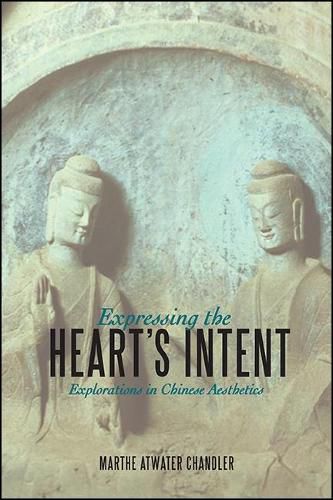Readings Newsletter
Become a Readings Member to make your shopping experience even easier.
Sign in or sign up for free!
You’re not far away from qualifying for FREE standard shipping within Australia
You’ve qualified for FREE standard shipping within Australia
The cart is loading…






In this wide-ranging examination of the concept of zhi ( the heart’s intent ) as the foundation of Chinese aesthetics, Marthe Atwater Chandler places traditional Chinese aesthetics in conversation with contemporary Chinese theory and traditional western philosophy. Poetry, music, painting, and calligraphy played much the same role in the development of thought in China as science did for philosophy in the west, with important implications for the relationship between art, religion, politics, and morality. Inspired by the work of Li Zehou, a leading contemporary Chinese philosopher and scholar of Kant who traced the relationship between philosophy and art throughout Chinese history, Chandler applies Li’s theoretical structure to specific traditions in Chinese art. Throughout the book she considers the relationship of aesthetics and religion in the Chinese adoption of Buddhism, the aesthetics of horse painting, and the personal and political in philosophy in the work of Su Dongpo. By examining particular works of art, Expressing the Heart’s Intent argues that if philosophy ignores the arts, it is immeasurably impoverished.
$9.00 standard shipping within Australia
FREE standard shipping within Australia for orders over $100.00
Express & International shipping calculated at checkout
In this wide-ranging examination of the concept of zhi ( the heart’s intent ) as the foundation of Chinese aesthetics, Marthe Atwater Chandler places traditional Chinese aesthetics in conversation with contemporary Chinese theory and traditional western philosophy. Poetry, music, painting, and calligraphy played much the same role in the development of thought in China as science did for philosophy in the west, with important implications for the relationship between art, religion, politics, and morality. Inspired by the work of Li Zehou, a leading contemporary Chinese philosopher and scholar of Kant who traced the relationship between philosophy and art throughout Chinese history, Chandler applies Li’s theoretical structure to specific traditions in Chinese art. Throughout the book she considers the relationship of aesthetics and religion in the Chinese adoption of Buddhism, the aesthetics of horse painting, and the personal and political in philosophy in the work of Su Dongpo. By examining particular works of art, Expressing the Heart’s Intent argues that if philosophy ignores the arts, it is immeasurably impoverished.